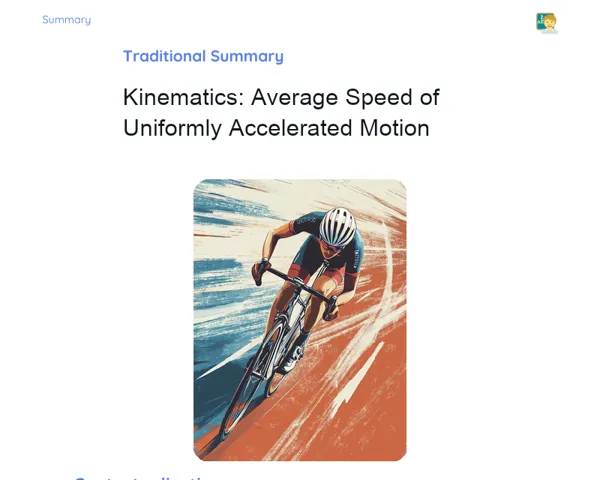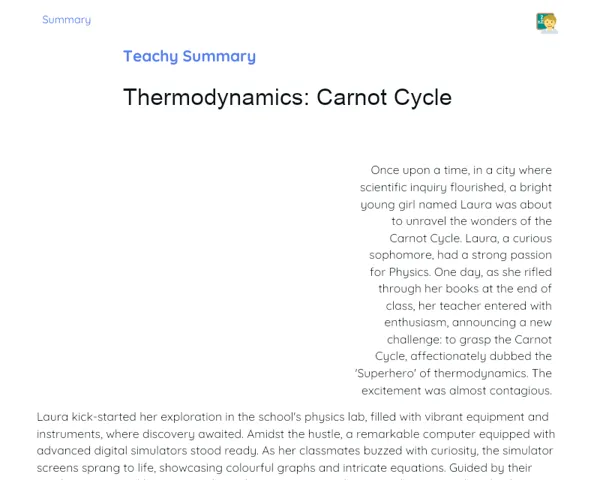Goals
1. Comprehend the breakdown of projectile motion into horizontal and vertical components.
2. Calculate the time, displacement, and velocities related to projectile motion.
Contextualization
Projectile motion is a common type of motion we come across in our daily lives. Whether it’s hitting a cricket ball or launching a paper plane, grasping how this motion operates is vital. By breaking it down into horizontal and vertical components, we can predict trajectories and work out key parameters like flight time and distance. For instance, when hitting a cricket ball, we can determine how far it will go and how long it will stay airborne based on the initial speed and angle of the strike.
Subject Relevance
To Remember!
Breaking Down Projectile Motion
Breaking down projectile motion involves splitting it into horizontal and vertical components. This method enables us to analyze motion efficiently by using different equations for each direction. Typically, the horizontal motion remains uniform, while the vertical motion changes consistently due to gravitational pull.
-
Separation of motion into horizontal and vertical components.
-
Utilization of specific equations for each component.
-
Ease of analysis and calculation of motion parameters.
Equations of Motion with Constant Acceleration
The equations of motion with constant acceleration are key to describing the vertical aspect of projectile motion. These equations connect position, speed, acceleration, and time, allowing us to calculate maximum height and flight duration. The primary equation is: S = S0 + V0t + (1/2)at².
-
Connection between position, speed, acceleration, and time.
-
Calculation of maximum height and flight duration.
-
Significance in analyzing the vertical aspect of motion.
Calculating Horizontal Range
The horizontal range of a projectile is the complete distance it travels horizontally. This can be calculated using the initial speed and launch angle, along with the flight time. The main formula is: R = (V0² * sin(2θ)) / g, where V0 represents the initial speed, θ is the launch angle, and g is the acceleration due to gravity.
-
Usage of initial speed and launch angle.
-
Influence of flight time on range.
-
Core formula: R = (V0² * sin(2θ)) / g.
Practical Applications
-
Civil Engineering: Designing bridges and buildings safely using the principles of projectile motion.
-
Sports: Coaches and athletes leverage these principles to boost performance in throwing and hitting.
-
Robotics: Designing robots that rely on accurate trajectory calculations using projectile motion decomposition.
Key Terms
-
Projectile Motion: Motion occurring in two dimensions, typically involving horizontal and vertical elements.
-
Motion Breakdown: The act of dividing motion into distinct components for easier analysis.
-
Equations of Motion with Constant Acceleration: Mathematical principles describing position, speed, acceleration, and time for motion with uniform acceleration.
-
Horizontal Range: The total distance covered by a projectile in the horizontal direction.
-
Flight Duration: The time a projectile stays aloft during its trajectory.
Questions for Reflections
-
How can projectile motion breakdown be utilized in different professional contexts?
-
In what ways can comprehending equations of motion with constant acceleration aid in resolving practical challenges?
-
How could insights on horizontal range and flight time benefit engineering projects and improve sports performance?
Hands-On Challenge: Building and Analyzing a Projectile Launcher
In this challenge, you will create a simple projectile launcher and analyze the path of the launched objects. The objective is to apply the concepts of decomposing projectile motion and calculate parameters like flight duration and horizontal range.
Instructions
-
Collect the needed materials: rubber bands, plastic spoons, paper, adhesive tape, and a ruler.
-
In groups of 4 to 5 students, construct a projectile launcher using the materials provided. The plastic spoon will act as a lever, and the rubber band serves as the propulsion source.
-
Launch a small projectile (made from paper) with the launcher, measuring both the horizontal distance traveled and the flight duration.
-
Document the data collected and compute the initial speed of the projectile by separating it into horizontal and vertical components.
-
Compare your measurements against theoretical calculations and discuss potential sources of error.



